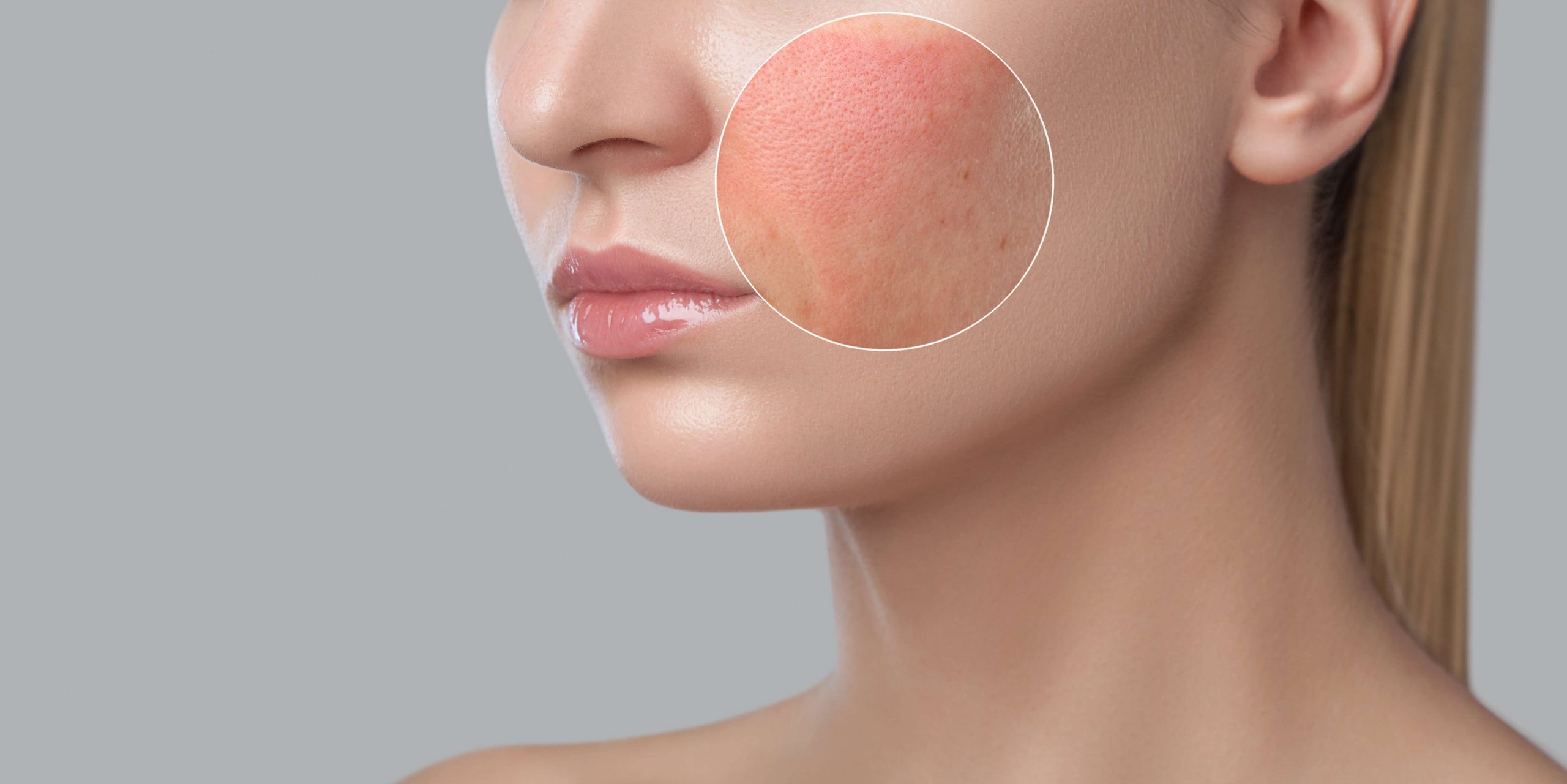
A facial rash is an inflammatory reaction of the skin on the face, causing your skin to become scaly, bumpy, itchy, or irritated.
Facial rashes can be caused by a variety of mild to serious conditions. In some situations, the presence of facial rash could be a warning sign for problems elsewhere in the body such as systemic lupus.
A facial rash can occur by itself or with other symptoms that vary depending on the underlying condition.
It can occur with other symptoms such as:
Facial rashes can vary greatly in appearance, location, and severity depending on the underlying cause. This article covers 6 common causes of facial rash:
Eczema, or atopic dermatitis, is a skin condition that appears as a red rash with flaking skin or as small blisters and bumps. While it frequently occurs in young children, it may start in young adults and can continue into adult life.
Itchiness of the skin can be caused by irritants, infections, allergies, and stress. Avoiding allergens such as animal dander, and dust mites can improve the condition.j
Allergic contact dermatitis is caused by coming into direct contact with substances to which you are allergic to. Common allergens include nickel (often used in jewellery), fragrances, formaldehyde, and preservatives in personal care products. This condition usually only affects the area that came into contact with the allergen.
Irritant contact dermatitis is the most common type of contact dermatitis and occurs when a chemical or other substance irritates your skin. Examples of such substances include detergents, bleach, skincare products, anti-septics, soaps, and perfumes.
Some people react to strong irritants after a single exposure. Others may develop signs and symptoms after repeated exposures to mild irritants.
Seborrhoeic dermatitis is a common skin condition that can affect people of all ages, causing the skin to become red, greasy, flaky, and itchy. While it is commonly known as dandruff on the scalp, it can also affect other areas including your face and ears.
This condition may subside without treatment or may require several treatments for the symptoms to go away. Daily cleansing with gentle soap and shampoo can help reduce oiliness and dead skin build-up.
Rosacea is a common skin condition that causes redness and visible blood vessels in your face. It may also produce small, red, pus-filled bumps. While rosacea cannot be cured, treatment can help reduce the redness.
While anyone can develop rosacea, you may be more likely to develop it if you:
Psoriasis is a condition that causes your body to make new skin cells in days rather than weeks. As the cells pile up on the surface of your skin, you may see raised, scaly patches.
It is a common, chronic (long-term) disease with no cure. It tends to go through cycles – flaring for a few weeks or months and subsiding for others.
Common psoriasis triggers include:
Facial rashes can be caused by several conditions. If the itching and redness you’re experiencing do not go away on their own, consult a dermatologist to get a diagnosis as there are many other rare causes of facial rash which could be autoimmune related.
Gleneagles Medical Centre
6 Napier Road, #06-01
Singapore 258499
Clinic Hours:
Monday, Tuesday, Thursday & Friday
8am to 1pm
2pm to 5pm
Wednesday and Saturday
8am to 12pm
Contact Information
T: +65 6254 6646
F: +65 6259 9853